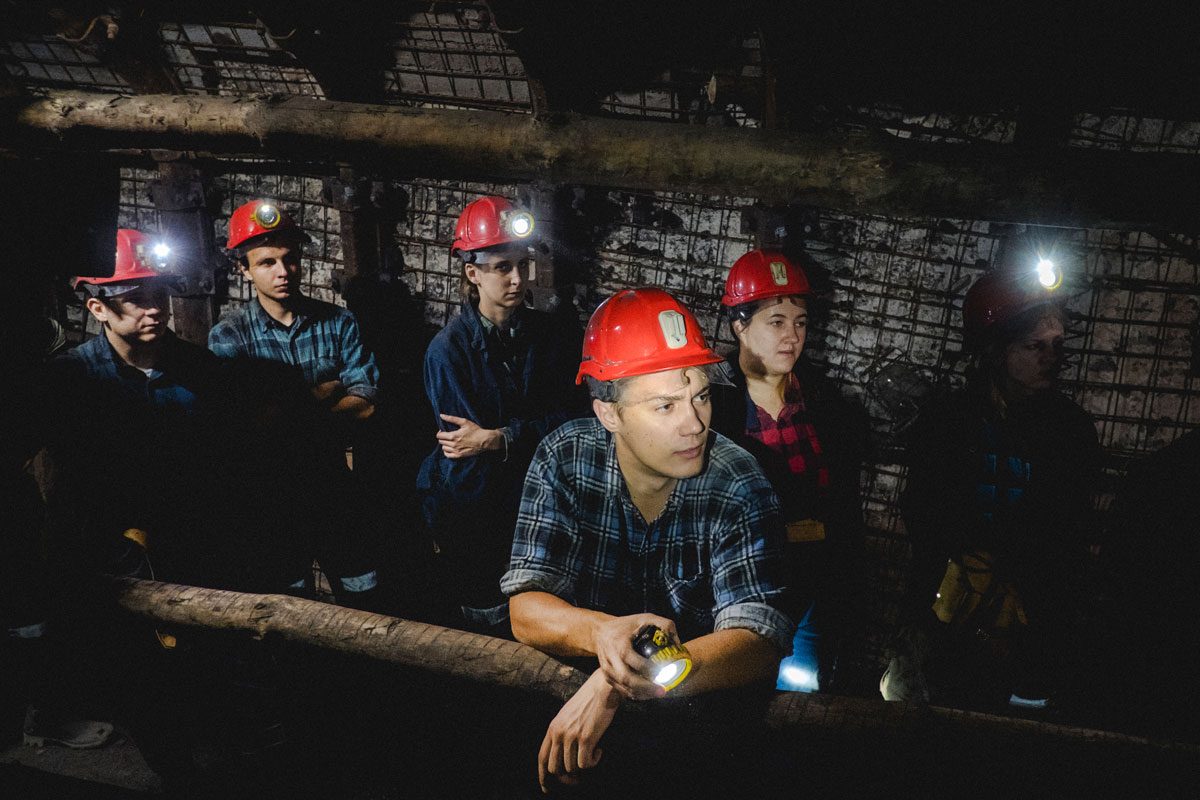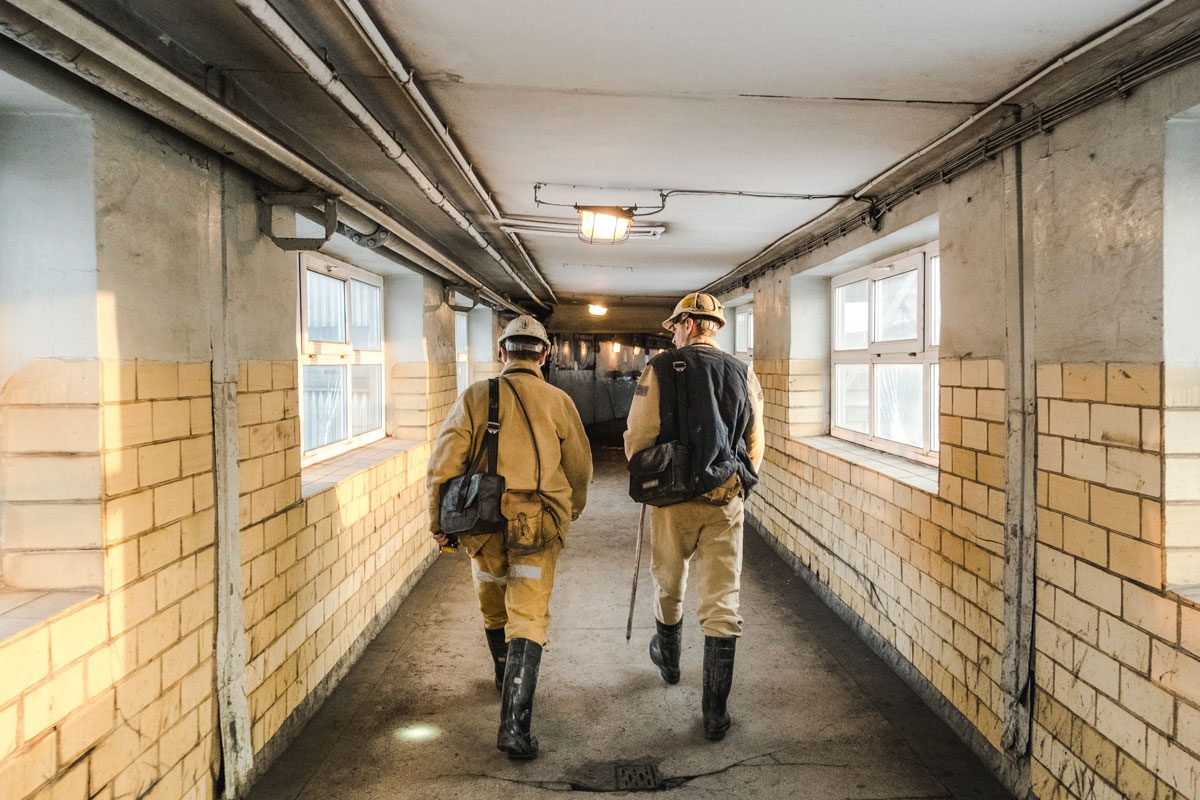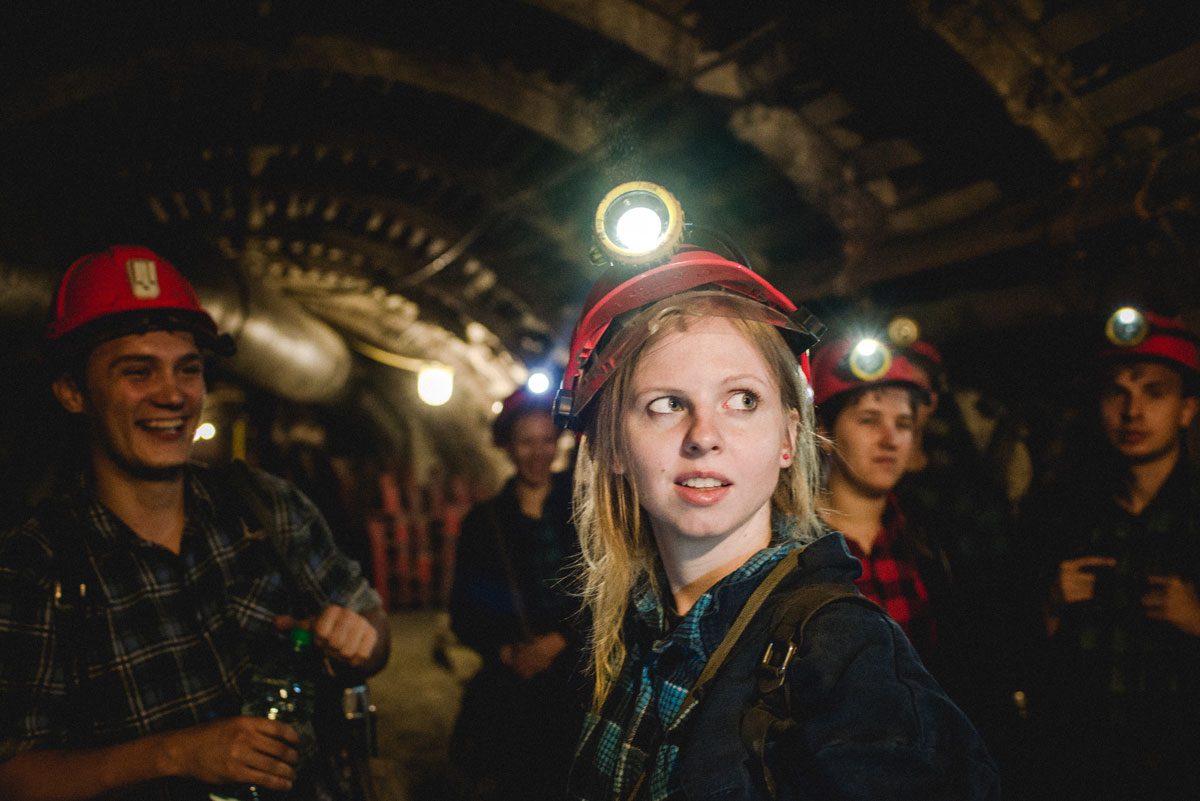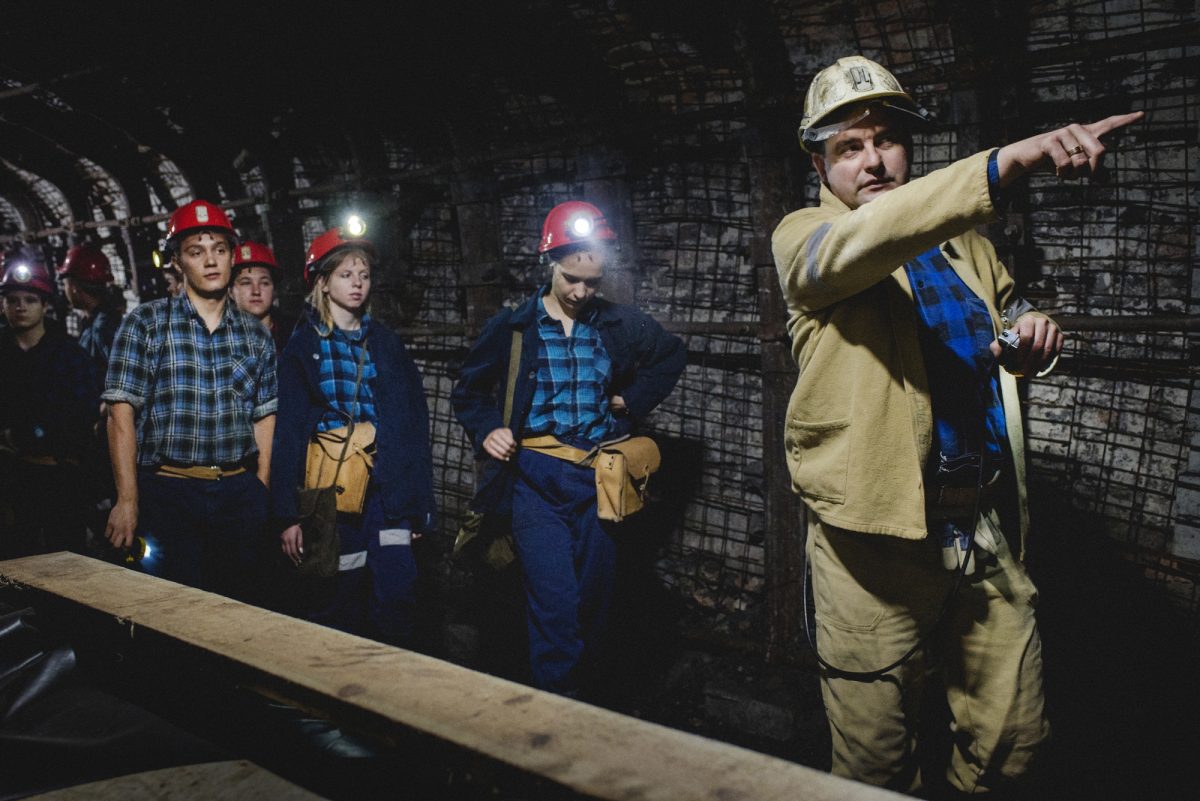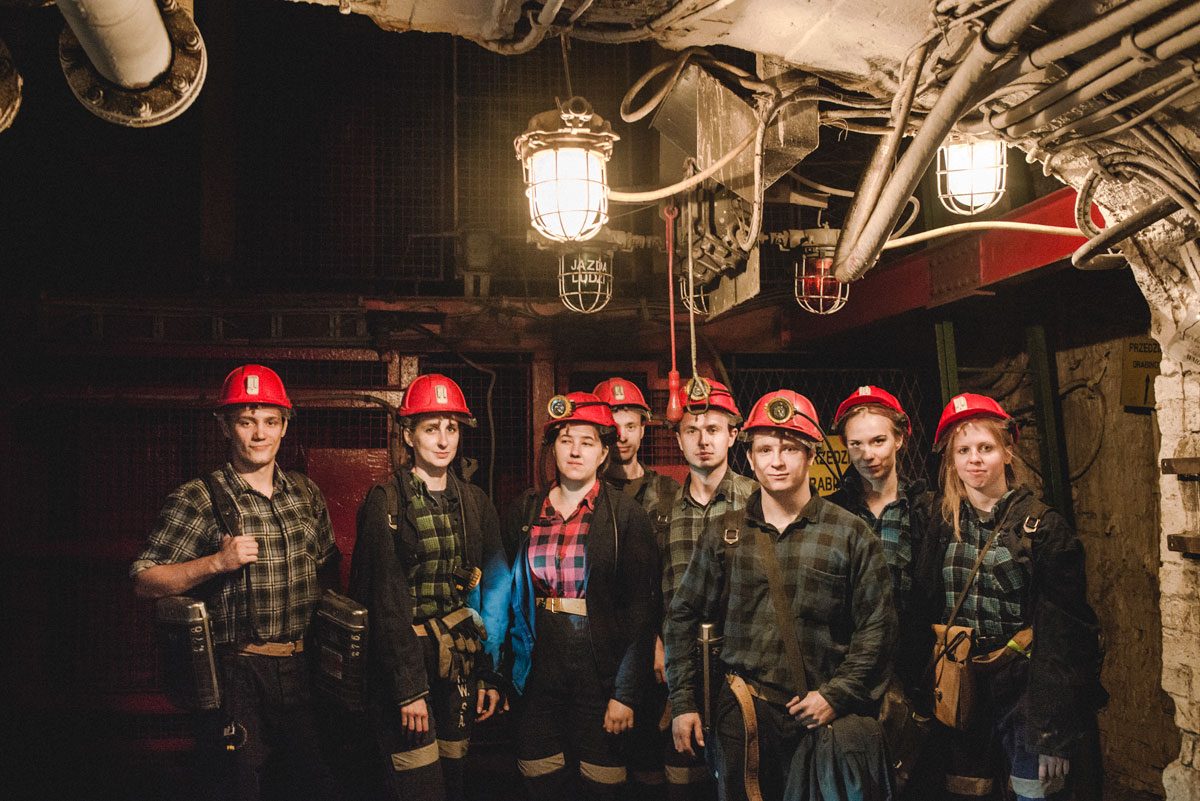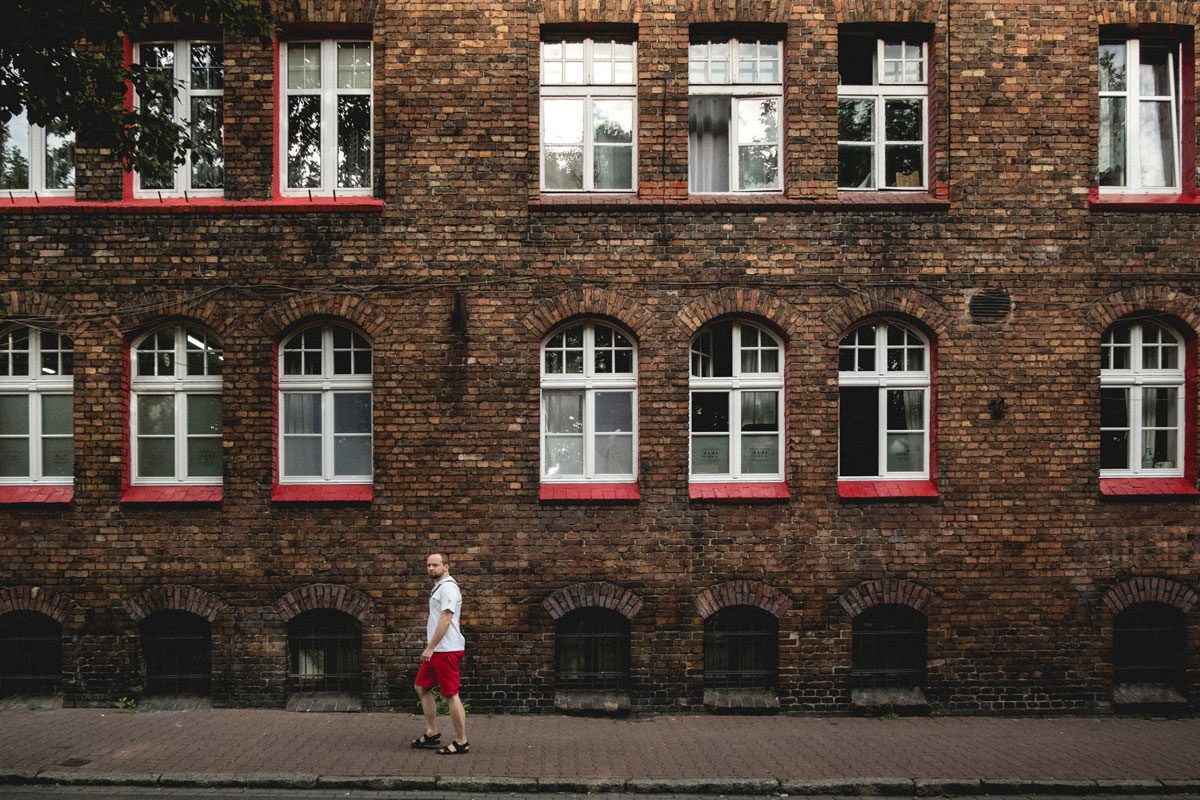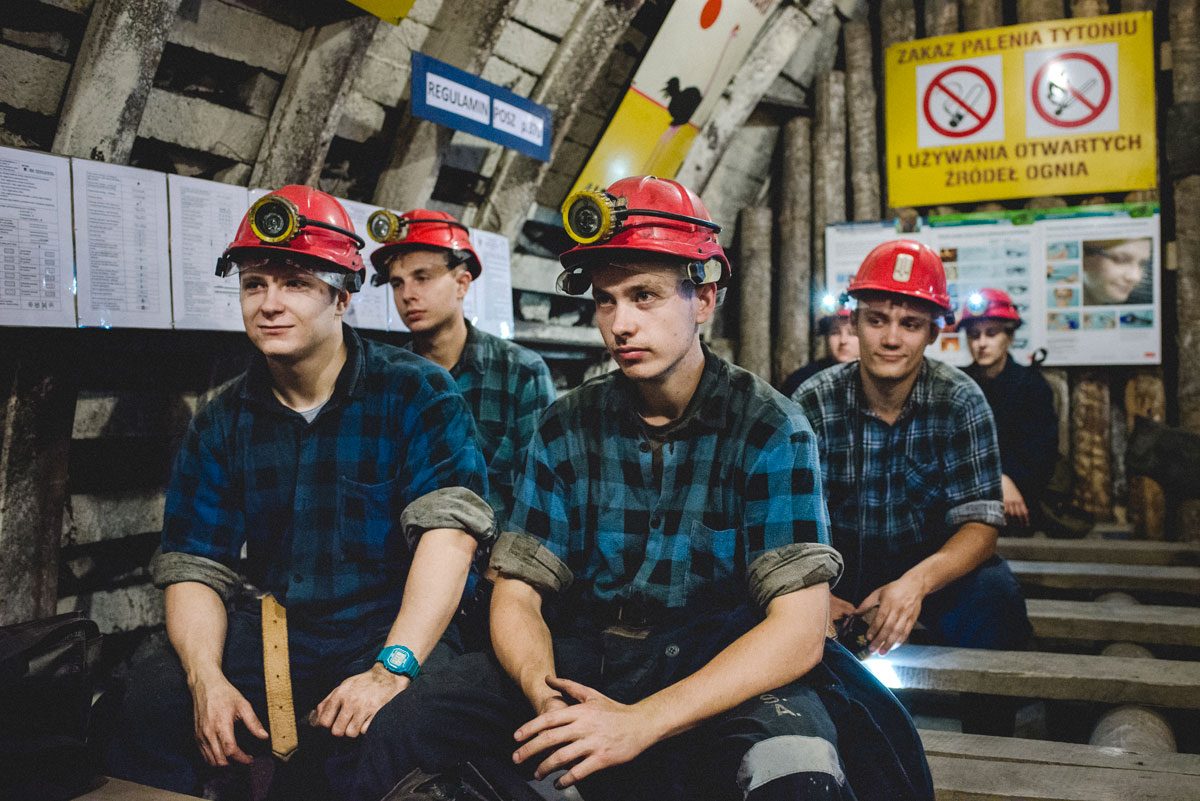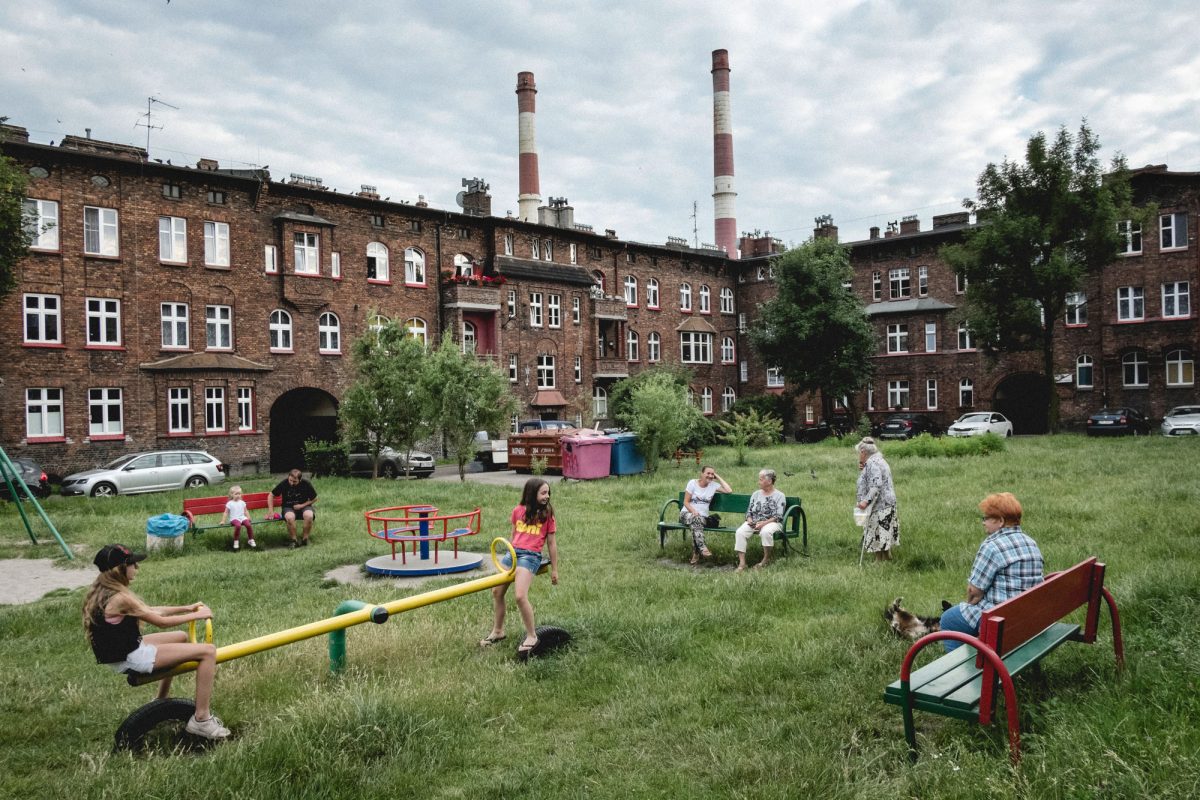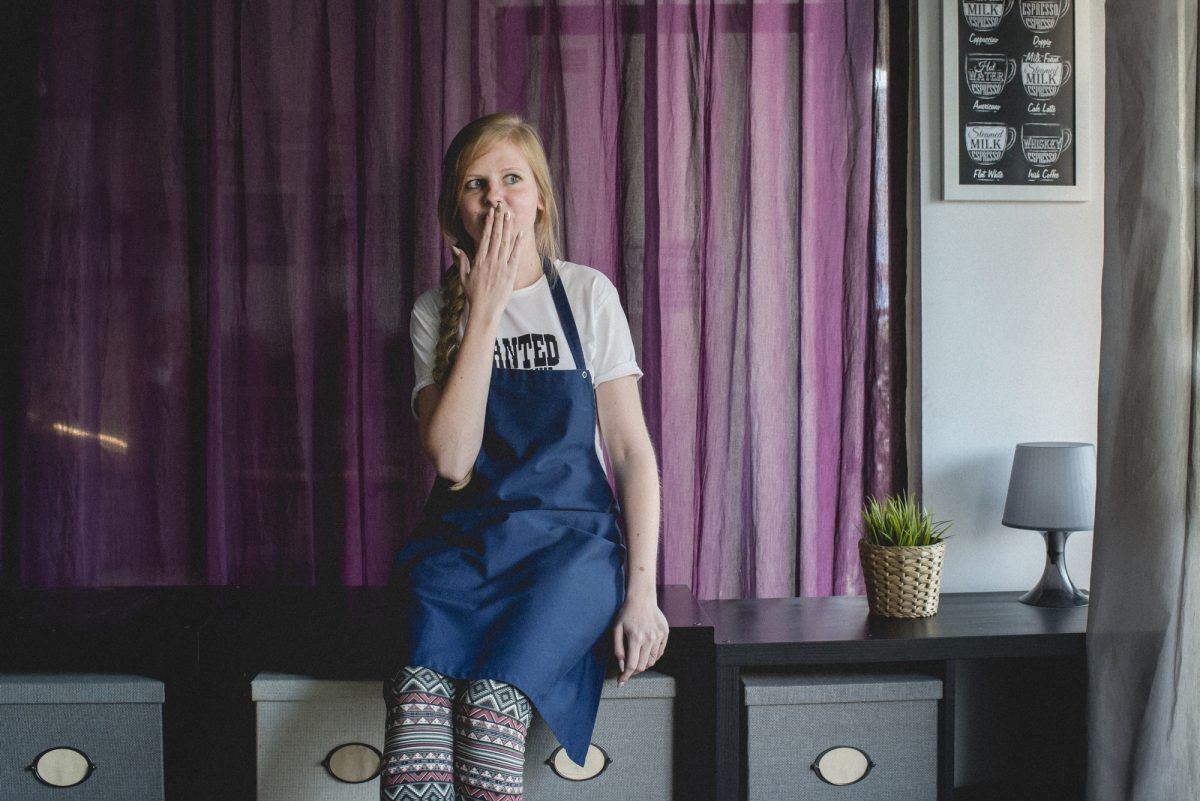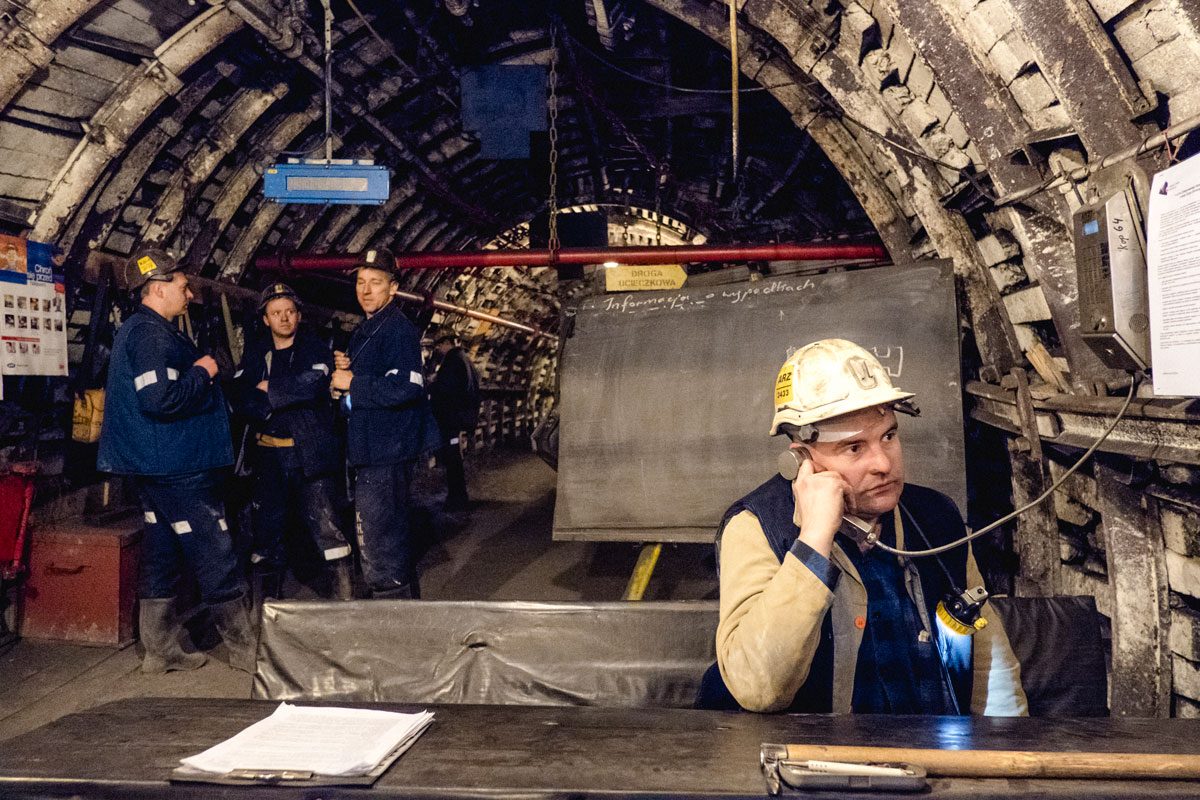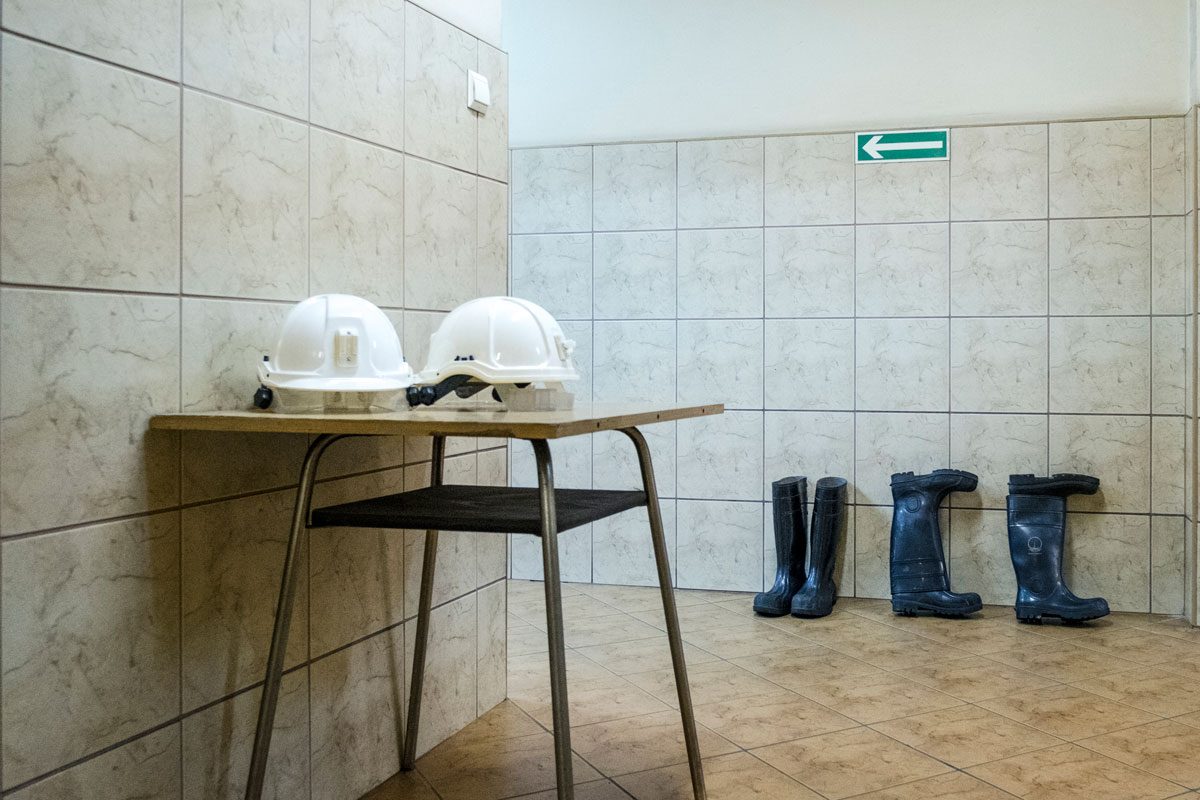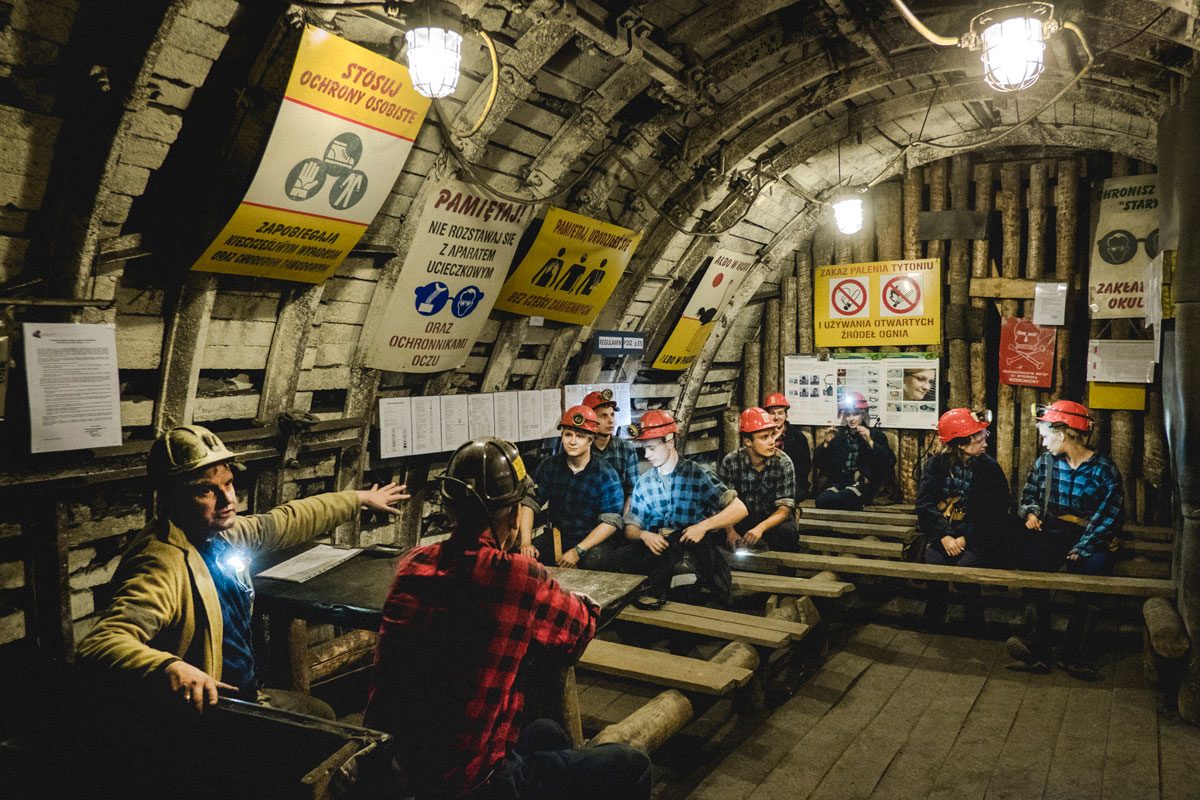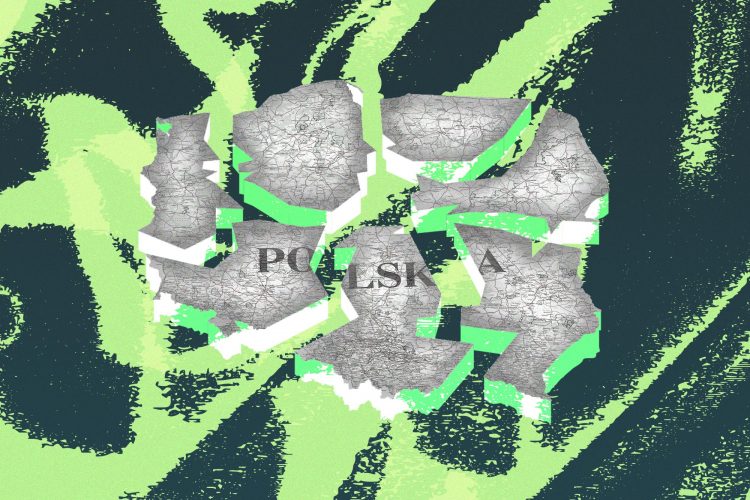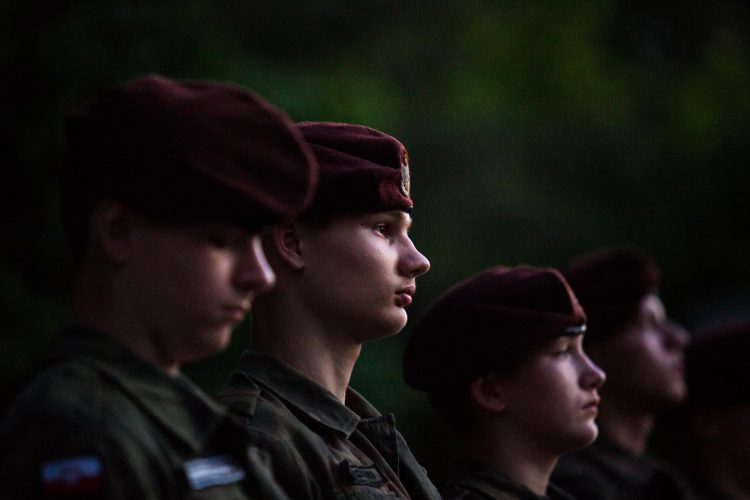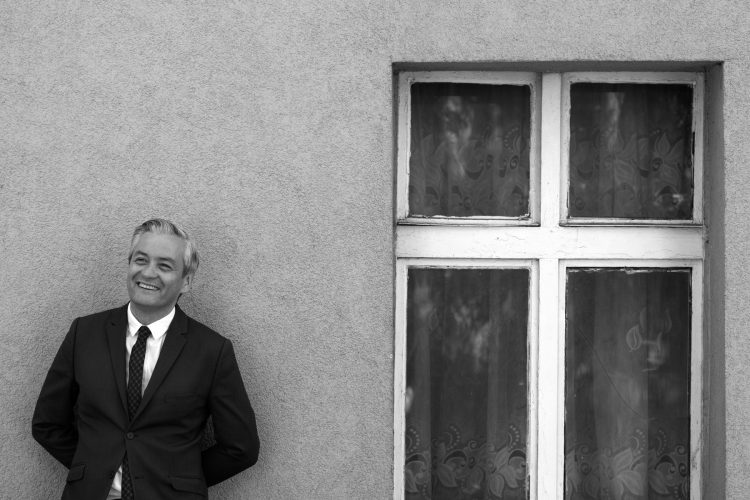For young Silesians coal is still the future
The Silesian Museum (Muzeum Śląskie) is located in the former coal mine of Katowice. June 2018 © Kasia Strek
In Katowice, the capital of Silesia, coal mines are still the stronghold of Poland’s energy security. Guaranteed employment, early retirement and family tradition attract young people who plan on spending their lives here, despite the sector’s decline.
Sylwia Kwak is used to waking up early. Today, as she has every Friday since September, Sylwia goes to the Wujek coal mine in Katowice. The digital clock, a relic of the ’80s, reads 6:00 am. At the front desk, which also features furniture straight out of the communist years, 23-year-old Sylwia meets her seven co-workers from the first and second years of the master’s programme at the Silesian University of Technology. A half-and-half girl/boy mix, these students take classes at (and are paid by) the company Polska Grupa Górnicza. In exchange, they must work for the company for a minimum of three years after completing their degrees. The programme includes maths, applied geology, underground operations, sociology, macroeconomics, etc. The students hope to obtain executive positions in the mining industry, which employs nearly 170,000 people in Poland, most of them in Silesia.
Poland is still the mining giant of the European Union, but here, like elsewhere, the profession is in an inexorable decline. There were twice as many miners in the country back in 1996, before the restructuring and closures began. The privately held Polska Grupa Górnicza is the number one producer of black coal in the EU. Founded after the bankruptcy of Kompania Węglow – mainly held at the time by the state treasury – it operates eight of the 30 active mines in Poland.
In the depths
Today Sylwia, her long blond hair tied back in a ponytail, follows the time-honoured rituals of the mine once again. After taking a token, she goes to the dressing room. Once there, she slips into the expected uniform: pants, shirt, jacket, belt, socks, shoes, shoulder bag and helmet. In the hanging room she receives a headlamp and an oxygen tank before heading to the elevator. Surrounded by illustrated signs depicting various underground dangers, she and her colleagues climb into a wobbly metal cage. The descent begins.
It’s an exam period, and both Marcin, the technician, and Piotr Buffi, director of the training programme, strive to keep the atmosphere relaxed. At the end of the ride, the apprentice miners exit 370 metres below the surface at the “pole szoleniowe,” a true research area, protected from firedamp explosions. It’s thanks to Buffi that this space exists. The 46-year-old teacher is one of the school’s founders. This is the only school in Poland to be located inside a working mine. “The youngsters” will learn the alpha and omega of mining in 21 sessions, even though they will probably never work in the mines themselves.
Sylwia pushes a wagon with the help of her fellow female students, while their male colleagues act as switchmen. “This is what a rescue wagon looks like,” says Buffi. “Remember, rescuers have to look out for their own safety! In your professional life, you’re going to be responsible for the people working inside the mine. You need to really know the ropes; each of you needs to be able to do your work here safely.”
“We learn a lot better down here! This is where we realise that we don’t know anything!” explains Sylwia enthusiastically, her rosy cheeks now covered in a layer of black dust.
“I chose mining so that I can retire after 25 years.”
“I chose mining so that I can retire after 25 years,” says her colleague Tomasz Kotyrba, taking out his snack. “Sure, it’s risky work,” the young Silesian adds, “but you don’t think about that once you’re doing it.”
After a short break, the supervisor continues asking questions. “How do you use a methane detector?” By way of an answer, he raises the mechanism at the end of his stick until it is 10 centimetres from the ceiling. Then the group heads for the exit, back up into the blinding light. The students return home. Most of them live with their parents, a few dozen kilometres away in the vast urban heart of Silesia, home to over 2 million people.
A training area was built in the former coal mining area at a depth of 370 metres. Every day, the newcomers and future engineers go underground. January 2018 © Kasia Strek
Miners, Hawaii and Fidel Castro
Sylwia takes the bus and the tram to get back to her family’s home in Mysłowice, the town next to Katowice. A no man’s land and sombre brick miners’ cottages roll by outside the windows, with the mine in the background. Mysłowice is only a shadow of the city it was back in 1972 when it was visited by Fidel Castro. At that time, miners were seen as vital elements of the Polish People’s Republic, and their achievements were praised both by mine directors and the larger population. That was before they began their resistance movement in the 1980s and were subjected to “pacifications,” like the one at Wujek in 1981 where eight miners died when the army and police forcibly ended a mass strike. In those days, miners came from every corner of the country, especially the provinces ceded to the USSR after World War II. They were working to reconstruct the entire nation, and at the same time repopulating the former Prussian Silesia. Today, miners are seen by the rest of Poland as the last survivors of a bankrupt sector, taking advantage of extravagant social privileges.
Sylwia doesn’t see it that way. To make ends meet she moonlights as a waitress in the town square, with its crumbling facades, at one of the rare cafés. “I’ve taken all kinds of odd jobs. I’ve raised money in Katowice and worked in Krakow,” she says with a smile. “But this is a lot closer to home!” Her grandfather worked in the mines in Wesoła, but Sylwia started working in coal by chance. “At first I wanted to be a linguist. Then I discovered geology. In the end, I was accepted by the school of mining.” She’s really not into computers: Sylwia dreams of building “kombajn”, the machines used to extract coal. “I’m the kind of person who likes action and getting to the bottom of things.” It doesn’t bother her that she’s the only girl in her class. “Mining is as much for women as it is for men. The only limitation is when the work gets too physical,” she says, a cup in her hand.
“My dream is to lead a simple life, with no enemies. I’d like to go to Hawaii though, just once!”
For Sylwia, like many of her fellow students, careers in mining are still appealing because they provide guaranteed employment not far from home. “I can’t see myself living far away from the people I care about. My dream is to lead a simple life, with no enemies. I’d like to go to Hawaii though, just once!” she adds. Locally, coal is seen as an abundant resource; it would be a pity not to take advantage of it. “Poland doesn’t have many hydraulic resources and we don’t have much wind. Nobody really wants nuclear energy. So we don’t have a lot of other options!” she says.
“What else would I do?”
But in Poland, where the conservative government is far from making the environment a priority, the question of the environmental risks associated with coal does arise. According to the activists in Katowicki Alarm Smogowy, a citizens’ group working to raise awareness of the phenomenon, just living in Katowice is equivalent to passively smoking 2,500 cigarettes per year.
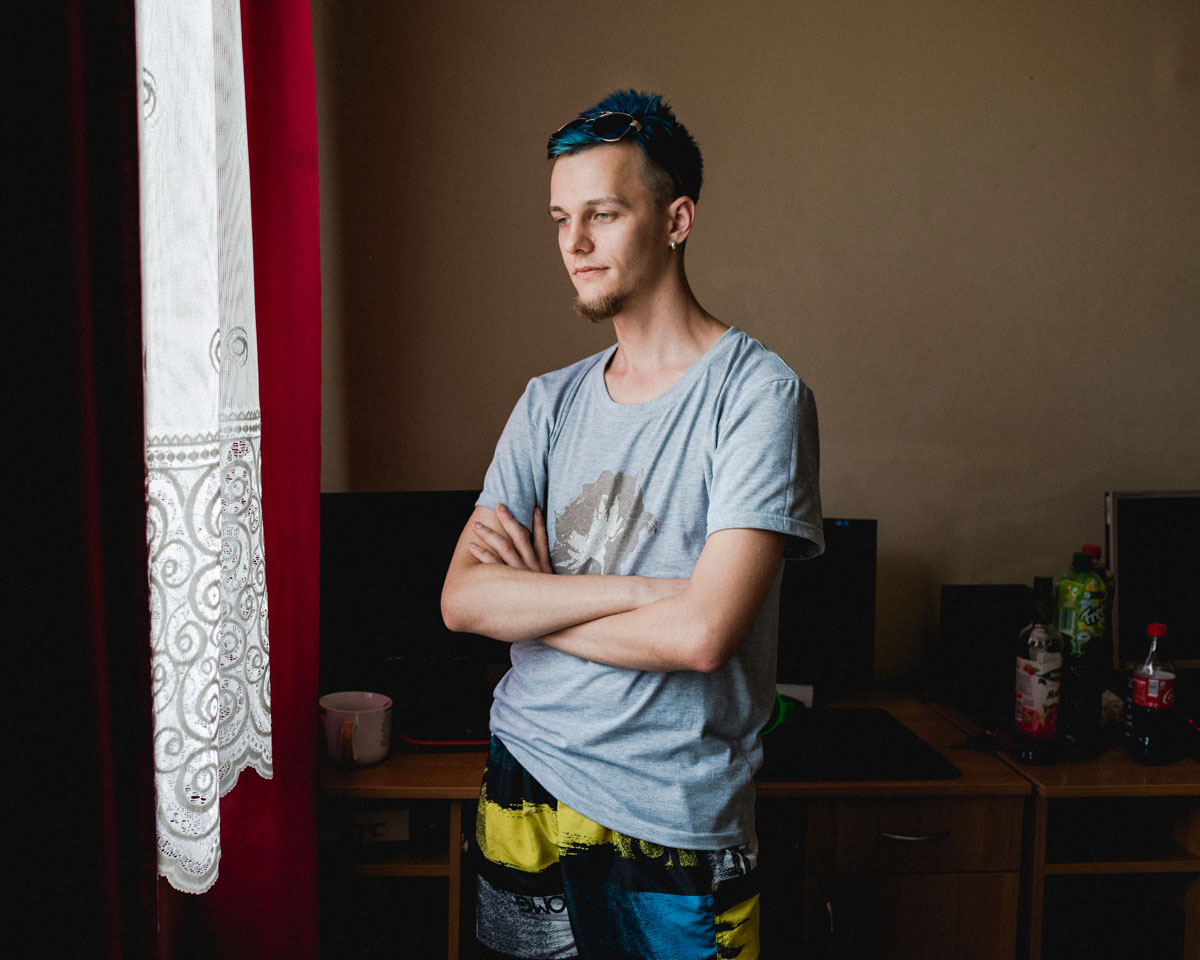
In Silesia, Poland’s black gold isn’t seen as the cause of smog, the atmospheric pollution the region experiences during winter months. Instead, people prefer to place the blame on inefficient combustion in the numerous homes still heated with old coal-burning stoves, relics of the communist days. This belief is also held by teachers, for example Pawel Sikora, professor of geodesy at the Silesian University of Technology in Gliwice. “Yes, Poland exceeds European limits for fine particles [the nation was even found guilty by the European Commission this past winter], but the problem mainly exists in areas where the air isn’t refreshed. Coal-powered energy plants have filters. What’s more, there is no proof that coal affects global warming. The press has a tendency to represent the mining world in a negative light,” he adds. It’s important to add here that Poland has experienced seven deadly accidents in its mines since the year 2000, with a total of 87 victims. The most recent was in May of 2018.
As the government continues to subsidise the struggling mining sector, it is confronted with an impossible dilemma: how can unprofitable Polish mines be closed without threatening the nation’s energy security? 80% of Poland’s energy comes from coal. It’s a resource that is still presented as vital in the official discourse. “We have to invest in mining and in its machines, its schools and its research, to keep operations going. We have at least 20 years worth of coal reserves,” states Buffi. Paradoxically, this mining professional who spent seven years working underground and continues to share his boundless passion with his students, hopes his two children won’t go into mining. “It’s extremely difficult work. Miners barely earn 2,000 zlotys per month [the equivalent of 500 euros]. They have to work the mines on Saturdays and Sundays to make sure they earn enough. In my father’s day, there were still social advantages, like 14th month pay, summer camp for the children, and even shops that were just for miners. Today there’s nothing left but the “Barbuka” [a traditional mining bonus, given out on Saint Barbara’s Day] and the early retirement.”
The regional train that goes from Katowice to Gliwice in 30 minutes shows signs of EU funding. Brand new, it transports students and workers to the heart of the Silesian metropolis. It passes mine shafts and brick chimneys taken over by nature. In the university residence in Gliwice, student miners from the University of Technology share two-person rooms and four-person kitchens. In Adrian Grzesiok’s room the computer takes pride of place, right next to his barely-unpacked suitcase. “I was at my parents’ in Bojszowy over the weekend,” explains the fourth-year mining student. Adrian chose mining “without a second thought.” His family lives five kilometres from the mine, and at that proximity no one escapes, not even his brother. Adrian plans to move back as soon as he’s finished his studies. “I’ll move into the first floor of my parents’ house.” He isn’t worried about his future. “It’s going to depend on decisions made at the highest levels. But they can’t close all the mines. Besides, technological advancements are making it possible to extract coal that was too expensive before,” he says.
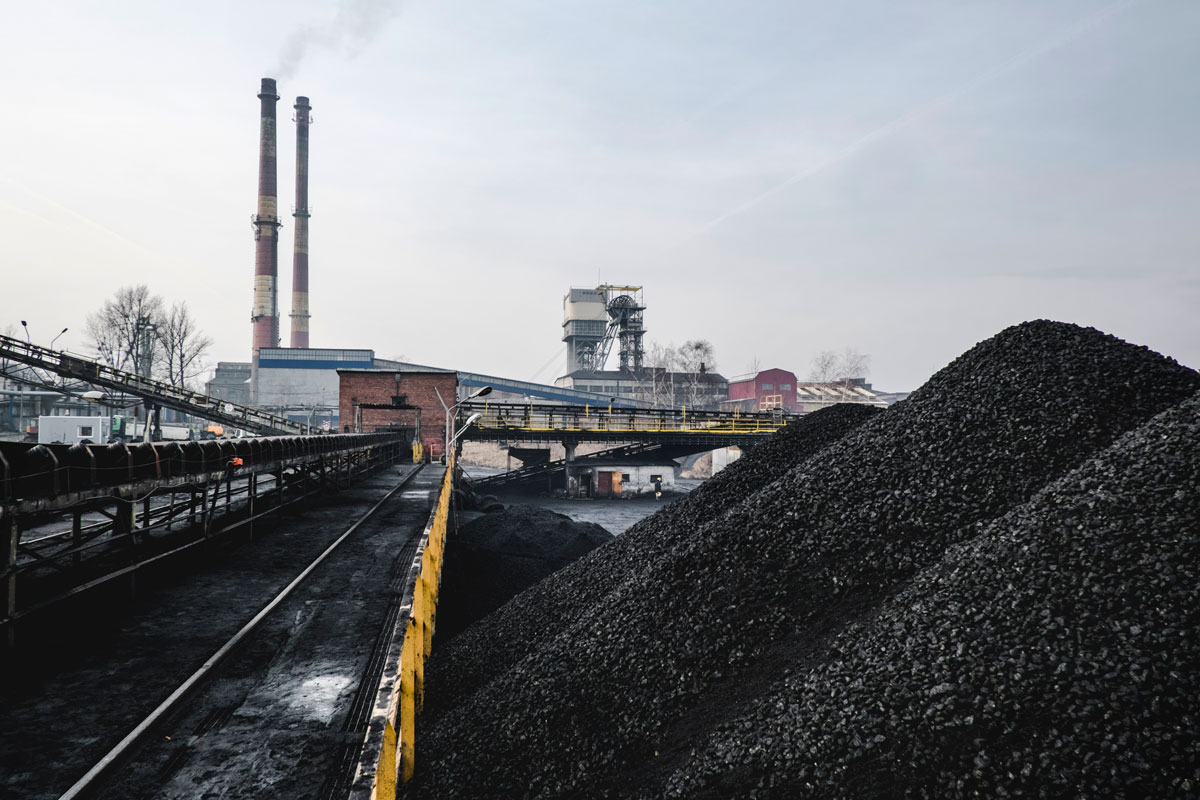
Nothing about the appearance of this young man, with his blue-dyed hair and pierced ear, suggests a deep attachment to tradition. But mining is in his blood. “Silesians are deeply connected to family and tradition. We have our own dishes, like rolada [beef roulade with pickles], and our own dialect. My grandparents spoke it, but they passed away before I could learn it. I also go to mass, because of my beliefs and because it’s tradition.” Adrian realises that pay conditions for engineers are far from desirable, but he appreciates the free coal for heating and other fringe benefits. As for the dangers of mining, he can’t ignore them completely, especially since his parents and grandparents suffer from lung disease.
Łukasz Wojcik almost couldn’t go back to work. Wojcik, a 30-year-old electrician, lives in the workers’ garden city of Nikiszowiec. With its tidy brick facades and tree-filled spaces, it’s one of the prettiest parts of Katowice: a modern city, with a highway running through it. Nikiszowiec was constructed before World War I, when this part of Silesia was still German, and has provided housing for generations of workers. Łukasz studied at the technical high school and now works in Wierczorek, 900 metres below sea level. On the weekend he gets together with his colleague Robert, who is already a father. “Everyone knows each other here,” says Robert, sitting his daughter down in the sandbox. “It’s a little like at the mine: solidarity reigns.”
Łukasz was the victim of an underground accident. But he went back, both because he is stubborn and because it was inevitable. “I’m an electrician at the mine. What else would I do?”




